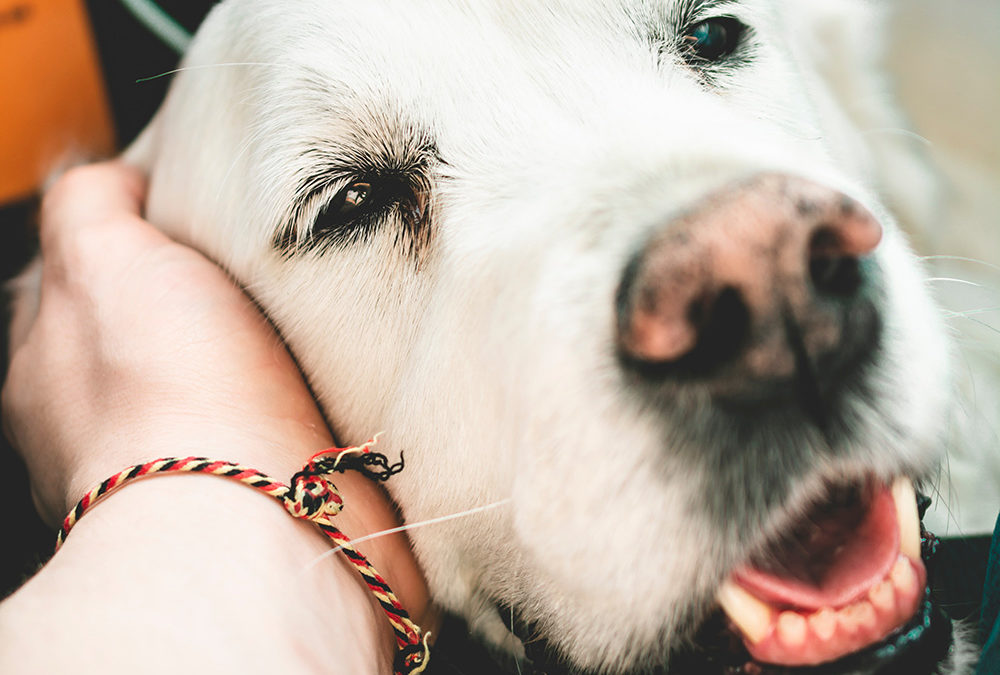Have you had a look at your canine or feline family member recently? You know the one- it was still a puppy/kitten just the other day…week….month….year! Can you see the tell-tale signs that he or she is approaching that ‘mature age’ era? A few grey hairs through the coat, a whiter muzzle, a slightly less manic look when the ball is brought out, the tearing through the back garden has settled into a more sedate trot, your cat is sleeping 20 hours a day?
If you are like me, it can come as a jolt that your beloved pet is getting old. My cat is nearly 10 years old now and he still seems the sleek, young black mini-panther he was a few years ago- or most of the time anyway. But, despite the odd tear-around-the-house session, he is much more content to spend the day asleep on my bed, safe from being bothered by my annoying mini Dachshund.
Right: Meet Sinbad, my ‘mature age’ moggie, making himself at home in my uni student son’s overnight bag when he came home for a visit recently. What a cat-like thing to do!!
As a rule of thumb, cats and dogs are considered geriatric once they reach 8 years old, not the 10-13 years that most people expect. Giant breeds are even considered elderly once they reach 6 years old. Of course, this is just a generalisation but many cats and dogs begin to show signs of ageing between 7-10 years old.
Just as your pet had special needs when he or she was young, your older pet has special needs too:
Dietary needs can change for a start – they often do better with a diet that has fewer calories, more antioxidants and is more easily digested. Eyesight and hearing can also alter so sometimes it will be necessary to change the way you manage your pet’s environment to keep them feeling secure and involved. Learn more about geriatric diets
Dental health can also suffer- teeth are more likely to have dental calculus, worn or damaged enamel or root damage. Intervention may be needed to stop teeth becoming painful or being lost.Check out one of my previous blogs on dental disease
We often think it is normal for our pets to be less active when they become older, but what may seem like ‘slowing down’ is really arthritis that makes is more painful for your pet to keep active. Arthritis can be managed effectively. I love seeing the response in both animal and owner when their pet’s arthritis is being treated. The animal moves so much more freely and the owner is delighted to see their dear old pal ‘acting like a pup again!’Learn more about arthritis and some treatments available
Older animals are more prone to getting lumps. These are usually benign (non-cancerous) but need to be checked by a veterinarian to make sure they do not need to be removed.
Sometimes changes occur which are not obvious at first. Kidney disease, heart disease, high blood pressure, liver disease, diabetes mellitis (sugar diabetes), low or high thyroid hormone levels, changes in cortisol levels, and anaemia are all conditions that can affect the older animal. There are signs which can be picked up during a physical examination by a veterinarian. However, to diagnose these problems it is often necessary to carry out further tests including blood and/or urine tests.
During November, we are offering a free in-house urinalysis test (conditions apply) for any pet that is at least eight years old (giant breeds- 6 years). Bring in a fresh urine sample and we will test it the same day. Urine tests are a really useful method to pick up some early health problems, especially diabetes and kidney issues. You do not need an appointment and if you need a sample jar, then call in a pick up a free one. Learn more about the older pet free urinalysis check.
We cannot stop our pets getting older but we can make sure they can enjoy the best health possible, when they get there.






